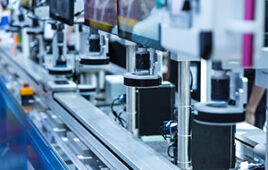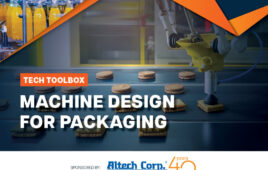When Siemens unveiled its Totally Integrated
Automation (TIA) approach to manufacturing in 1996 the concept didn’t
seem all that new or revolutionary at first glance. “Well that’s just
modularity,” some opined. However, they didn’t understand the totality
of the TIA vision which calls for both vertical and horizontal
integration, defines the interaction of the software, the hardware and
services and ties the plant together from the management level, through
the operators and controllers to the field in a single, holistic
automation solution.
The idea behind TIA was to tie all relevant areas of the
plant together to streamline everything from design to commissioning to
production and maintenance — to make it possible to do everything faster.

“Why can’t you operate the plant from one console?” asks Siemens
spokesperson Bob Harris. “We don’t want to think about things as discrete
components, each with its own management requirements. We want to think about
things as parts of a single entity and address everything in relation to the
whole.”
approach taken by other vendors — or forced upon them — is its inside-out
construction.
an outside-in development process,” he says. “Most integrated plant automation
systems have been produced by the convergence of efforts of disparate
development teams, concentrating on different processes and often working for
different companies.
expanded to encompass more of the activities surrounding their core focus they
bumped into each other and were forced to work together and code was added ad hoc to integrate them. This process
was repeated over and over again until you have a comprehensive industrial
automation system that encompasses the entire operation from plant floor to top
floor.
come from different, and sometimes incompatible, development processes they
don’t interact effectively. At the end of the day your industrial automation
system is one big mash-up.”
a central core system that provides the basic resources commonly required by
nearly all enterprises. Additional resources are added to the core to tailor
the system to the individual customer’s requirements. Central to this approach
are modularity and a strict adherence to the interface standards.
environment that ties everything together.
was given a short deadline to get an automation system off the ground in
January Simatic Manager played a significant role in his success. The
Inglewood, CA-based company is developing an electromagnetic catheter guidance
system for operating rooms and has already gained significant attention in the
health care industry globally. In fact, the first system is scheduled for
deployment in Madrid, Spain in Q1 of 2010. Siemens had been selected for the
project for its popularity overseas, but Mattenson hadn’t worked with Siemens
products in almost two decades.
with a new technology,” he says. “I went from never having seen a Siemens S7 processor
to having the system up and running in three months.
totally integrated development environment. You don’t find that in the PLC
world very much. Other suppliers require you to run four or five different
software packages to get the job done. I’ve become very used to getting at
everything from within one application. I think it’s fantastic.”
NC., who has been using Simatic Manager since 1999 knows where Mattenson is
coming from. “It’s a little overwhelming at first for a new user because it’s
so flexible but I got used to it.
in blocks. With other apps, it’s all one project. When you access it, it’s the
entire project. That makes it hard for people to collaborate. When you are
working on something, it’s very difficult for someone else to be engaged
simultaneously. By having things in individual blocks, if my colleague wants to
get work, he can open his data block and when he’s done he can just email me
the block. I just copy those blocks into the master project.
repetitive task, a task you may need to execute in many places on the line or
in the plant like converting Fahrenheit to Celsius for example, you only have
to do it once. Input parameters are put to it and you can have as many outputs
as you want. Other vendors have started doing this but Siemens has had it since
I started in ‘99.”
is that when you start with a project in the S7 world, you can really pick the
approach you want to take. Software, hardware or networking, you can really
engineer it to meet your preferred workflow.
have all those as elements within the project in a simple Windows-esque folder
tree menu and all connected through whatever networking protocol you want, PROFIBUS,
Ethernet, etc.
“This saves a lot of time right from the planning stage
through setup and then start up and documentation and then troubleshooting or
maintenance. All the tools are tied together. It also cuts down on training
because you only have to learn one system.
kind has become de rigueur in both discrete
and process manufacturing. The benefits of having some kind of all encompassing
system are too great to ignore, including: improved production transparency,
reduced downtime, reduced process integration costs and lowered total cost of
ownership. The next step is to maximize these benefits.
inherently compatible at the foundation level, and that makes a huge difference
to the end user in terms of simplifying the operation and saving time and
money.”
For more information on SIMATIC Step 7 Engineering Software and SIMATIC Manager, please click here.
::Design World::
Filed Under: Factory automation, ENGINEERING SOFTWARE





Tell Us What You Think!